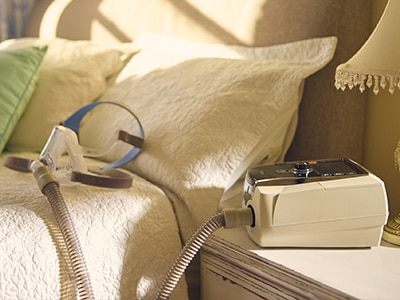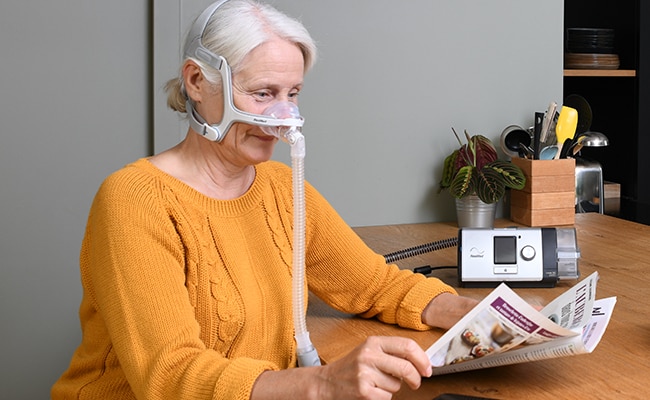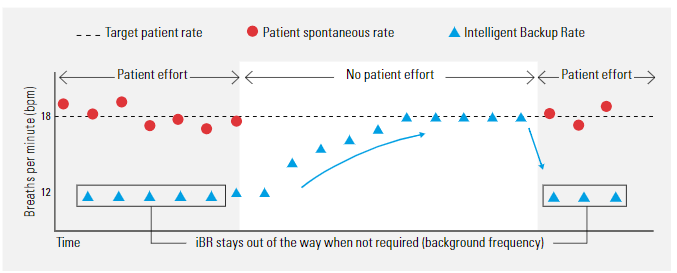What’s the problem?
A back-up rate that’s inflexible, incorrectly set or fails to take account of the patient’s breathing pattern can limit opportunities for spontaneous breathing and result in patient-device asynchrony and over-ventilation.
What does iBR do?
The intelligent Backup Rate (iBR) algorithm* provides backup breaths when an apnoea or lack of effort is detected. It is designed to maximise opportunities for spontaneous breathing and ensure an appropriate frequency when the patient relies on their device for support.
How does it work?
iBR monitors the patient’s breathing and intervenes when it identifies that the patient requires support. Unlike a traditional back-up rate that relies on fixed timings and values, iBR uses a Target Patient Rate that is pre-configured to match the patient’s average spontaneous rate. If an apnoea or lack of effort is detected, iBR provides backup breaths to gradually shift the patient’s respiration from the lower limit (the background frequency, set at two-thirds of the target rate) to the Target Patient Rate. When the patient is breathing spontaneously and does not require support, iBR stays out of the way.
Download the iBR card
Keen to keep this information handy? Download a print-friendly version.
Keep Exploring

ResMed Academy Online
ResMed Academy Online is designed to provide healthcare professionals with easy access to a variety of learning resources.

Ventilation machines
Whether your patient needs mechanical ventilation at home, in hospital or on the move, our versatile ventilation devices provide effective therapy for a wide range of respiratory conditions.

Technical support
Our team of experts work to answer your technical questions relating to ResMed sleep and respiratory devices and software.
*iBR is available in Lumis ST mode and in iVAPS mode in Lumis 150 ST, Lumis 150 ST-A, Stellar 150 and Astral devices.
This content is intended for health professionals only. Please refer to the user and clinical guides for relevant information related to any contraindications, warnings and precautions to be considered before and during use of the products.
Update: 03/2024


